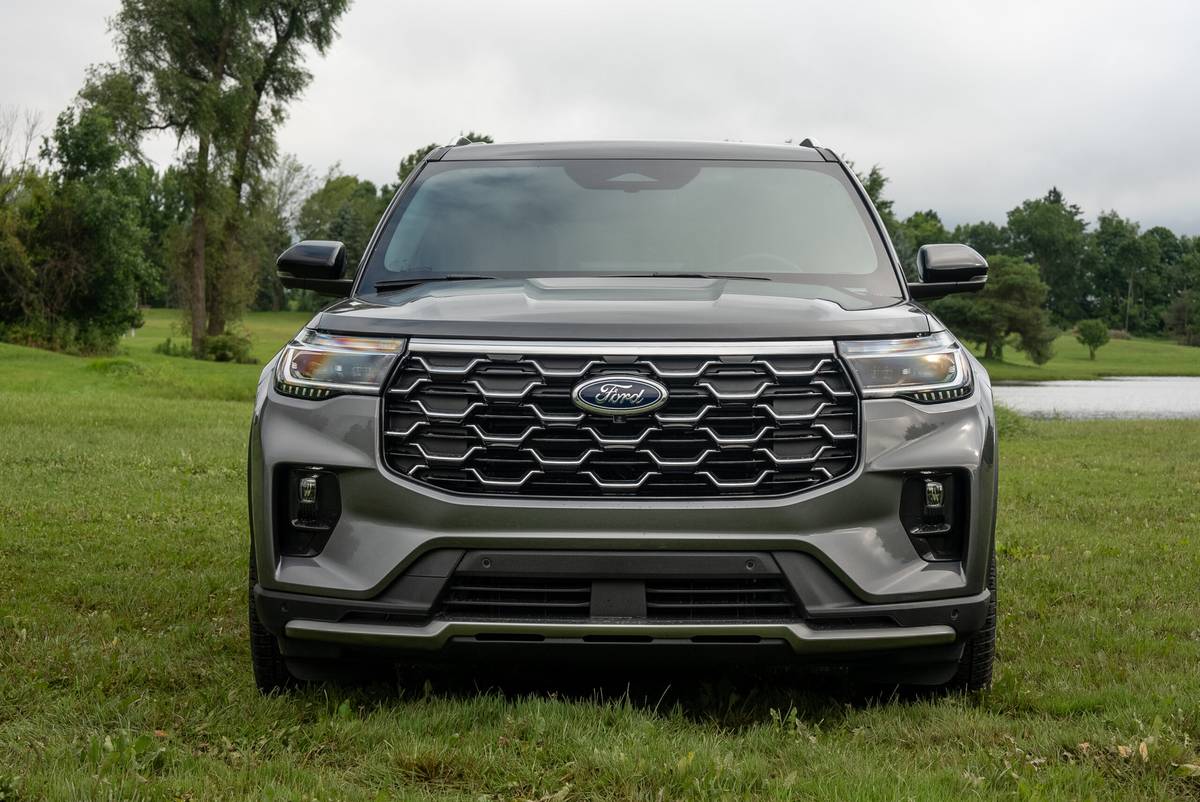2015 Chevrolet Trax: First Drive

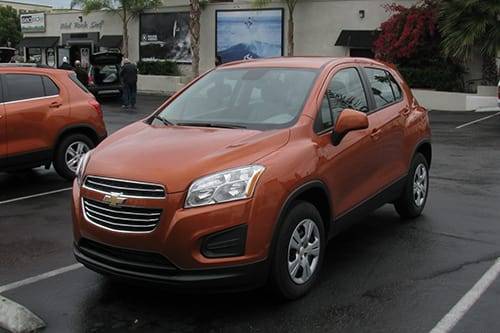
By William Jackson
Buying a small car used to mean buying a hatchback or sedan, but now carmakers are rolling out SUVs to fill up that end of the market. Subcompact SUVs like the Nissan Juke and Kia Soul have been around for a while, but Chevrolet, Honda and Mazda are entering the fray with the Trax, HR-V and CX-3, respectively.
Related: Research the 2015 Chevrolet Trax
With its 2015 Trax, Chevrolet offers a small SUV with exceptional visibility, good interior room, a surprisingly large cargo area, but pokey acceleration — especially with the optional all-wheel drive.
The Trax is offered in the base LS trim as well as LT and LTZ. Each model uses the same 138-horsepower, turbocharged 1.4-liter four-cylinder engine and six-speed automatic transmission. Each trim also has the option of all-wheel drive. Pricing ranges from $20,995 for an LT with front-wheel drive up to $27,405 for a LTZ with all-wheel drive, including an $875 destination charge.
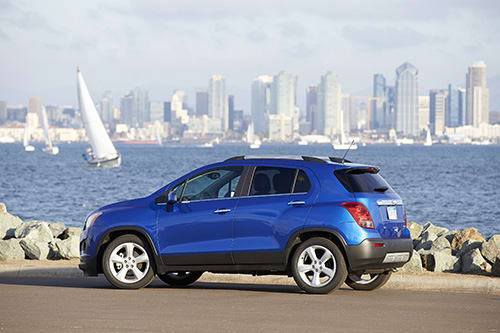
How It Drives
Just as there’s no getting around the fact that the Trax is a small car, there’s also no getting around that it’s a modestly powered one. It has good throttle response initially, so you know the car wants to go, but what happens after that largely depends on drive wheels equipment.
With all-wheel drive, there’s no surge of power. Instead, it just sort of ambles along up to speed. It’s not terrible around town, but the lack of power is noticeable. Hills and highway merges are a definite weak spot.
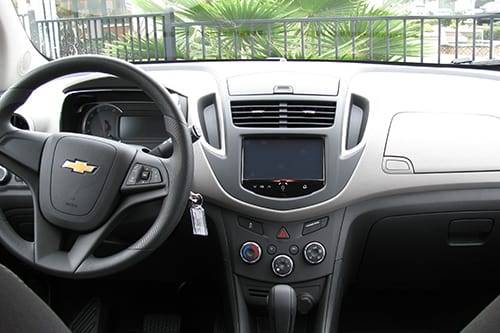
In either case, the six-speed automatic transmission does what it can by kicking down gears or holding on to them to give you as much power as it can. I prefer that transmission to many of the continuously variable automatic transmissions on the market in terms of responsiveness and behavior.
Still, I’d go so far as to recommend drivers test both models, and ask themselves if they truly need all-wheel drive before going with that version, especially since you’ll pay a mileage penalty: The EPA rates the front-wheel-drive Trax at 26/34/29 mpg city/highway/combined and the all-wheel-drive version at 24/31/27 mpg.
If power isn’t the Trax’s calling card, visibility will be. The Trax has the best visibility of any car I’ve recently driven. Obviously a lot of that is how the windshield and windows are shaped and angled. The Trax is more upright in design than a lot of swoopy cars out there and that’s a benefit; its high seating position also aided visibility.
I wish the side mirrors could be a bit larger, but that’s a fairly minor. Shoppers moving from other compact sedans and hatchbacks will be impressed with how much more they can see when driving the Trax.
Interior
It won’t just be Trax drivers noticing things going on around them: passengers will benefit too, especially the wee ones. A designer told me they were challenged to make it so a 5-year-old could see out the rear windows. I can’t vouch for that — no 5-year-olds were provided for our test drive — but all-around visibility is excellent.
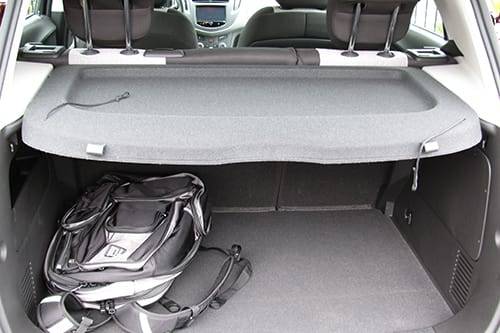
If that’s not enough room, the second-row seats fold for 48.4 cubic feet of room, and all Trax models have a front passenger seat that folds flat and is backed with hard plastic for carrying long items such as surfboards.
Moving around to the front, it’s largely the same story: There’s lots of room for stuff. There’s no center console, but there are numerous door pockets and a storage area under the front passenger seat. Also, the Trax has top-of-dash storage for sunglasses as well as a compartment above the glove box that holds a USB connection; it’s also large enough for bigger smartphones plus a pair of gloves or something.
The car’s interior space is also bigger than it looks. My co-driver was about the same size as me — about 6-feet tall and broad through the shoulders — and we never bumped elbows during our drive. Make no mistake: This is a small car and you’ll be cozy, but not cramped.
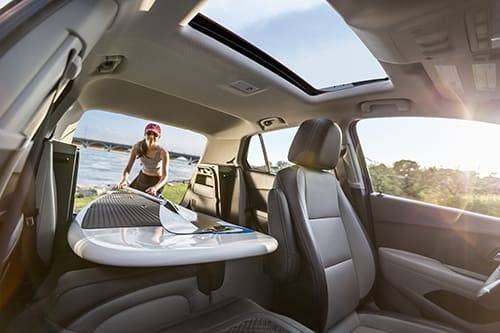
The overall interior quality is OK. There is a lot of hard plastic, but it looks acceptable. The LTZ trims get more chrome accents and a nicer metallic finish around the climate controls and radio. Overall, it’s fine for a Chevrolet, but if it were a Cadillac or a Buick I’d raise more complaints.
Finally, Chevrolet uses its MyLink system for multimedia and navigation integration. In the era of ubiquitous smartphones, having a system that works with your phone’s navigation makes a lot of sense. Why pay for a fully integrated navigation system if you can punch the destination into your phone and have the map display on your vehicle’s screen? And why pay extra for that integrated system? This also gets the automaker out of the business of trying to be one step ahead of smartphones, app developers and Google. That’s smart.
Overall, that’s what the Trax is: smart. Instead of trying to be a sporty SUV or a wildly styled one, it aims for more modest performance with more practicality.
In this it largely succeeds. It’s a well-packaged SUV that offers a surprising amount of interior room, the option of all-wheel drive and great visibility, but it still needs more power — even though it’s not trying to be a sports car — to excel beyond the small urban trips that Chevrolet has in mind for the vehicle.
Manufacturer images; Cars.com photos by William Jackson

Former managing editor David Thomas has a thing for wagons and owns a 2010 Subaru Outback and a 2005 Volkswagen Passat wagon.
Featured stories

